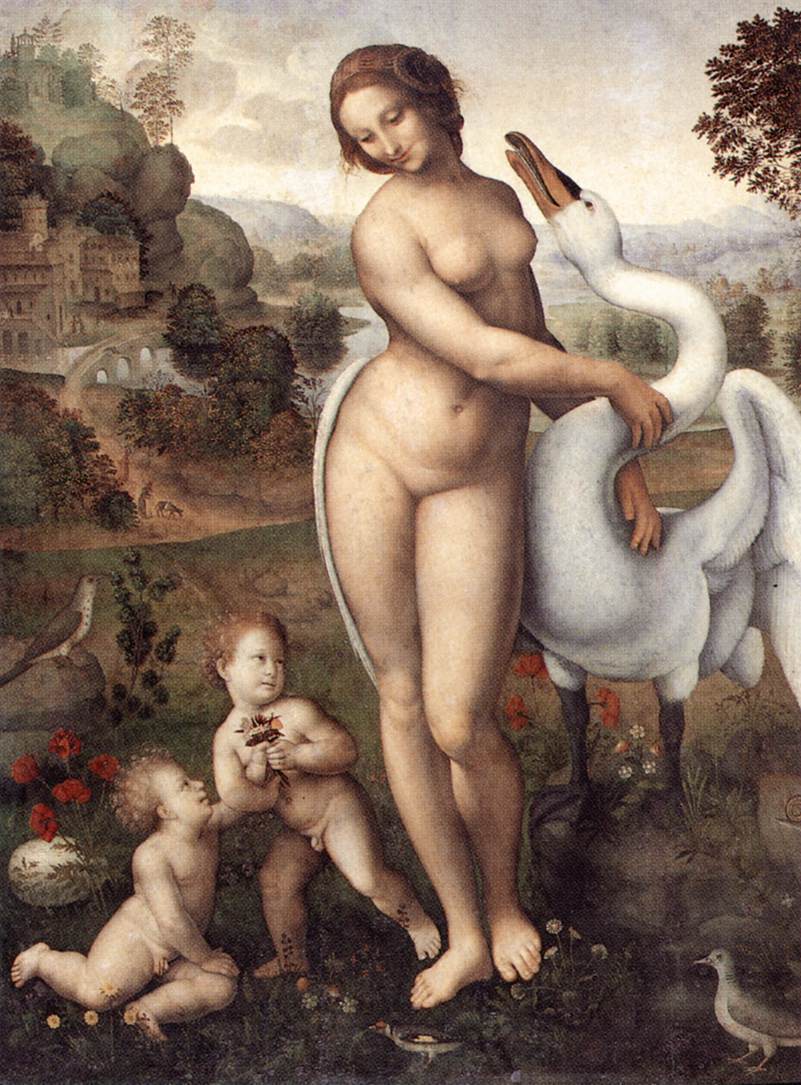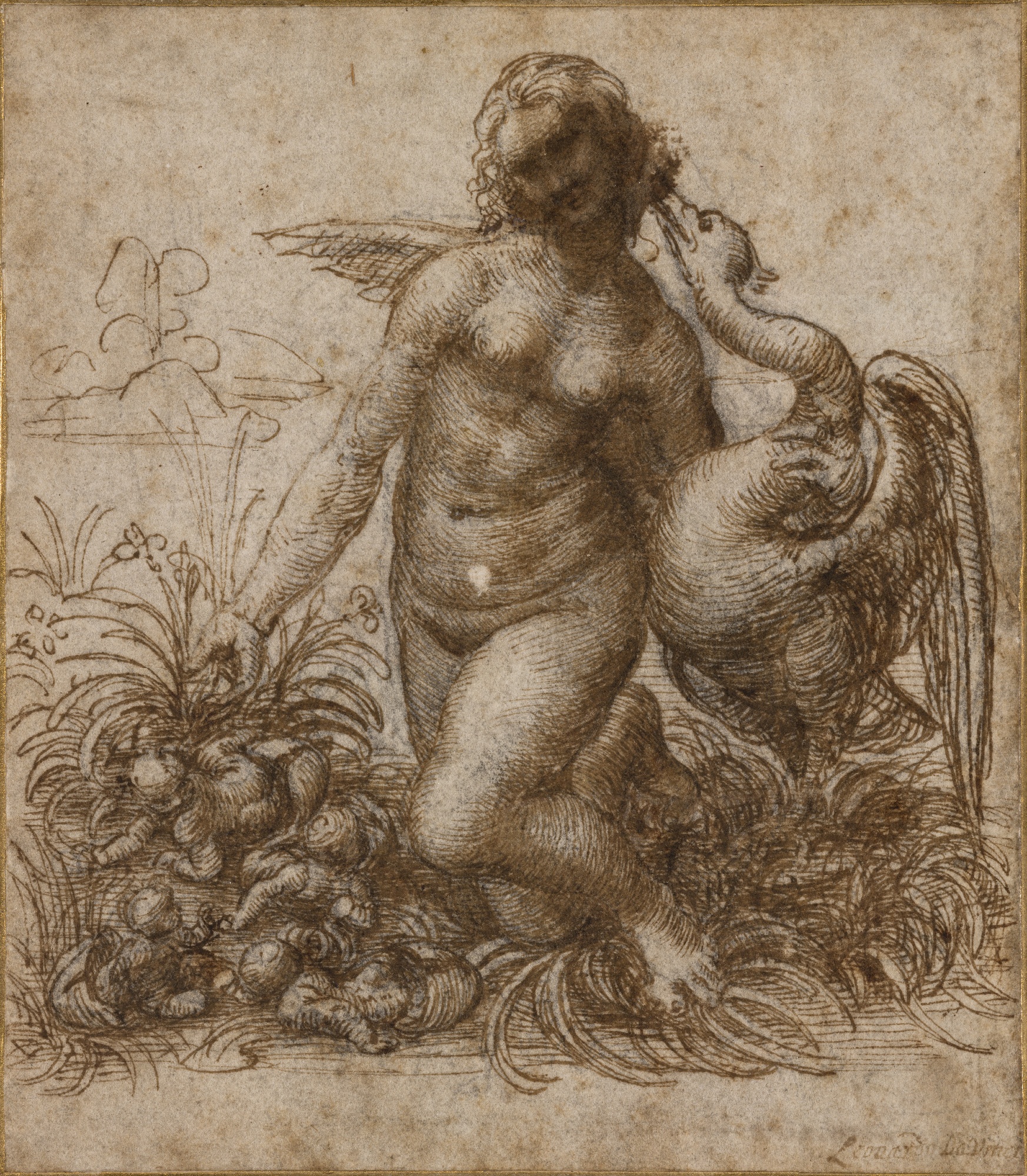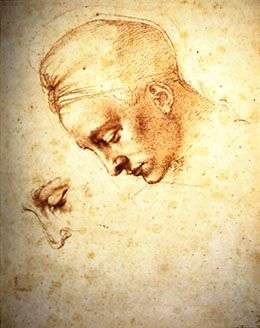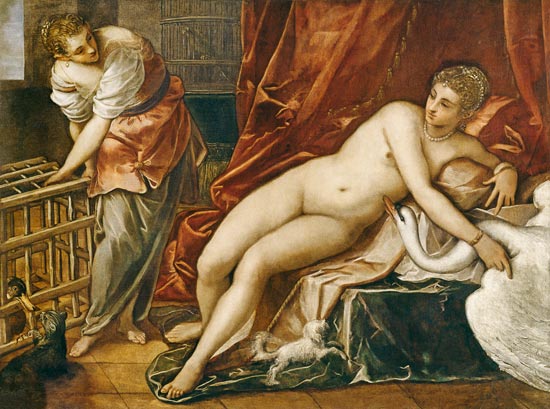|
Leda And The Swan (other)
Leda and the Swan is a classical myth. Leda and the Swan may also refer to: *Leda and the Swan (Copenhagen), ''Leda and the Swan'' (Copenhagen), statue *Leda and the Swan (Correggio), ''Leda and the Swan'' (Correggio), an oil on canvas painting by Correggio *Leda and the Swan (Galleria Borghese), ''Leda and the Swan'' (Galleria Borghese) *Leda and the Swan (Leonardo), ''Leda and the Swan'' (Leonardo), lost painting *Leda and the Swan (Michelangelo), ''Leda and the Swan'' (Michelangelo), a lost tempera on canvas painting by Michelangelo *Leda and the Swan (Peter Paul Rubens), ''Leda and the Swan'' (Peter Paul Rubens), a painting surviving in two versions *Leda and the Swan (Tintoretto), ''Leda and the Swan'' (Tintoretto) *Leda and the Swan (Uffizi), ''Leda and the Swan'' (Uffizi) *Leda and the Swan (Wilton House), ''Leda and the Swan'' (Wilton House), painting by Cesare da Sesto See also *Leda (other) *Leda Atomica, a painting by Salvador Dalí {{disambiguation ... [...More Info...] [...Related Items...] OR: [Wikipedia] [Google] [Baidu] |
Leda And The Swan
Leda and the Swan is a story and subject in art from Greek mythology in which the god Zeus, in the form of a swan, seduces or rapes Leda. According to later Greek mythology, Leda bore Helen and Polydeuces, children of Zeus, while at the same time bearing Castor and Clytemnestra, children of her husband Tyndareus, the King of Sparta. According to many versions of the story, Zeus took the form of a swan and had sexual intercourse with Leda on the same night she slept with her husband King Tyndareus. In some versions, she laid two eggs from which the children hatched. In other versions, Helen is a daughter of Nemesis, the goddess who personified the disaster that awaited those suffering from the pride of Hubris. Especially in art, the degree of consent by Leda to the relationship seems to vary considerably; there are numerous depicions, for example by Leonardo da Vinci, that show Leda affectionately embracing the swan, as their children play. The subject was rarely seen in ... [...More Info...] [...Related Items...] OR: [Wikipedia] [Google] [Baidu] |
Leda And The Swan (Copenhagen)
A ''Leda and the Swan'' statue, depicting the classical myth of Leda and the Swan, was from 1611 to 1795 a major landmark in Copenhagen, Denmark. The statue topped a tall column located just off the entrance to the naval Arsenal Harbour. History The monument was built in 1611 during the reign of King Christian IV. Lauritz de Thurah's ''Den Danske Vitruvius'' (1st volume, 1746) incorrectly states that the statue was brought home from Kalmar as war loot. The monument was built on an artificial islet with walled sides, on a shallow-watered sandbar known as the ''Mermaid Bar'' due to a particularly high frequency of reported mermaid sightings, just outside the entrance to a new naval harbour, the Arsenal Harbour which was completed about the same time. In 1795, the monument was removed when increasing ship traffic in the harbour made it necessary to dig out the area which, by then, was only one metre deep. The fate of the statue is uncertain. Some reports state that shortly befor ... [...More Info...] [...Related Items...] OR: [Wikipedia] [Google] [Baidu] |
Leda And The Swan (Correggio)
''Leda and the Swan'' is an oil on canvas painting from 1530–31 by the Italian painter Correggio, now in the Gemäldegalerie in Berlin. It shows three scenes of Leda (mythology), Leda's seduction by Jupiter (mythology), Jupiter who has taken the form of a swan. Their first meeting is shown on the right hand side and their lovemaking in the centre, where Leda sits with the swan between her thighs, guiding him with her left hand. They are accompanied to their left by Cupid with his bow and two cupids with flutes. The third scene (again on the right hand side) is the swan flying away whilst Leda gets dressed. Leda and the Swan was a common subject in 16th-century art. History Correggio conceived a series of works entitled ''Amori di Giove'' or ''Love Affairs of Jupiter'' after the success of ''Venus and Cupid with a Satyr''. The series eventually consisted of two pairs of works, each pair having the same dimensions, though he may have planned for there to be more. The precise order ... [...More Info...] [...Related Items...] OR: [Wikipedia] [Google] [Baidu] |
Leda And The Swan (Galleria Borghese)
''Leda and the Swan'' is a tempera grassa on panel painting by an artist from the circle of Leonardo da Vinci, probably Cesare da Sesto. It dates to c.1510-1520 and is now in the Galleria Borghese in Rome. It and other versions at Wilton House and the Uffizi are considered the three best copies after Leonardo's own lost ''Leda and the Swan Leda and the Swan is a story and subject in art from Greek mythology in which the god Zeus, in the form of a swan, seduces or rapes Leda. According to later Greek mythology, Leda bore Helen and Polydeuces, children of Zeus, while at the sa ...''.{{Cite web, url=https://mcarte.altervista.org/leda-col-cigno-il-leonardo-perduto/, title=Article, language=it References category:1510s paintings category:Paintings in the Borghese Collection Galleria Borghese Paintings of children Italian paintings ... [...More Info...] [...Related Items...] OR: [Wikipedia] [Google] [Baidu] |
Leda And The Swan (Leonardo)
The story of Leda and the Swan was the subject of two compositions by Leonardo da Vinci from perhaps 1503–1510. Neither survive as paintings by Leonardo, but there are a number of drawings for both by him, and copies in oils, especially of the second composition, where Leda stands. First version Leonardo began making studies in 1504 for a painting, apparently never executed, of Leda seated on the ground with her children. Three sketches of Leda by Leonardo exist: * ''Leda and the Swan'', pen and ink and wash over black chalk on paper, 160 x 139 mm. 1503–1507, Devonshire Collection, Chatsworth (pictured) * ''Study for kneeling Leda'', black chalk, pen and ink on paper, 126 x 109 cm. 1503–1507, Museum Boijmans Van Beuningen, Rotterdam * ''Studies of Leda and a Horse'', black chalk, brush and ink on paper, 1503–1507, Royal Library, Windsor It has been proposed that Leonardo's Chatsworth sketch for ''Leda and the Swan'' (pictured) may have been inspired by the ... [...More Info...] [...Related Items...] OR: [Wikipedia] [Google] [Baidu] |
Leda And The Swan (Michelangelo)
''Leda and the Swan'' is a lost tempera on canvas painting by Michelangelo, produced in 1530, but now only surviving in copies and variants. The work depicted the Greek myth of Leda and the Swan. History In 1512, Alfonso I d'Este, Duke of Ferrara went to Rome to reconcile with Pope Julius II, who had excommunicated him in the summer of 1510 for his alliance with Louis XII of France against the Republic of Venice. Julius absolved him and Alfonso spent a few days in Rome before returning to Ferrara. On 11 July, he visited the Sistine Chapel, where Michelangelo was completing the ceiling. He climbed the scaffolding and had a long and admiring conversation with Michelangelo, who promised him a painting. Several years passed without the commission being formalised until Michelangelo had to be in Ferrara in 1529 to inspect its city walls as "governor general of fortifications" for the Florentine Republic, ready for an expected Imperial siege. On that occasion the Duke held Mich ... [...More Info...] [...Related Items...] OR: [Wikipedia] [Google] [Baidu] |
Leda And The Swan (Peter Paul Rubens)
''Leda and the Swan'' is an oil painting by Peter Paul Rubens, who painted two versions of this subject. The first was completed in 1601 and the second in 1602. Rubens was heavily influenced by Michelangelo, and both paintings are variations on Michelangelo's famous lost painting, which is known from copies and prints. He was introduced to his work on his journey to Italy. Rubens decided to go to Rome to make copies of paintings and further his studies of Italian art from the leading Italian Renaissance painters of the previous century. In Rome, he encountered Michelangelo's version of ''Leda and the Swan''. A copy of Michelangelo's original work was done by Rubens. Rubens would have been familiar with Michelangelo's ''Leda''. His version is considered a prototype for Rubens's two works. Rubens's 1601 ''Leda'', was modeled after Michelangelo's ''Leda''. The placement of the body is very similar as is its twisting posture. Even the positioning of the fingers is mirrored. ... [...More Info...] [...Related Items...] OR: [Wikipedia] [Google] [Baidu] |
Leda And The Swan (Tintoretto)
''Leda and the Swan'' is a c.1550-1560 oil on canvas painting by Jacopo Tintoretto. Doubts on its autograph status were quelled by its restorations in 1988 and 1994. Art historians do not agree on its dating, though most now place it in the 1550s, the same period as his '' Mars and Venus Surprised by Vulcan'' ( Alte Pinakothek) and '' Joseph and Potiphar's Wife'' (Museo del Prado). '' Judith and Holofernes'' (Prado) was also previously dated to that decade but has now been downgraded to a studio work. In the late 18th century the work was in the Orleans Collection in Paris, before being purchased in London by the Duke of Bridgewater, then in 1857 by Paul Norton, and finally being donated by Arturo De Noè Walker in 1895 to its present owner, the Uffizi in Florence. Gloria Fossi, ''Uffizi'', Giunti, Firenze 2004. Another version from Alessandro Contini-Bonacossi's collection is also owned by the Uffizi, from which the servant was later cut-off - this version was probably t ... [...More Info...] [...Related Items...] OR: [Wikipedia] [Google] [Baidu] |
Leda And The Swan (Uffizi)
''Leda and the Swan'' is a c.1505-1507 oil and resin on panel painting by a painter in the circle of Leonardo da Vinci. It may have originated in the Gualtieri Collection in L'Aquila and passed through various others before being acquired from the Spiridon Collection in 1989 by its present owner, the Uffizi. It and the versions in the Leda and the Swan (Galleria Borghese), Galleria Borghese and Leda and the Swan (Wilton House), Wilton House are considered the three closest copies after Leda and the Swan (Leonardo), Leonardo's own lost work on the same subject. Bernard Berenson even argued the Uffizi work was an autograph work by Leonardo himself, but this is rejected by modern art historians in favour of one of Leonardo's students, possibly Francesco Melzi with some assistance on the landscape background from Joos van Cleve. It is usually dated to the end of Melzi's stay in Milan before leaving for France with Leonardo. Other suggestions include Cesare da Sesto or Fernando Yáñez ... [...More Info...] [...Related Items...] OR: [Wikipedia] [Google] [Baidu] |

).jpg)



